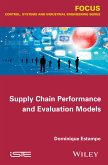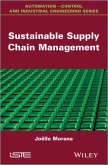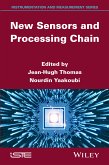Jean-Louis Boulanger
CENELEC 50128 and IEC 62279 Standards (eBook, PDF)
139,99 €
139,99 €
inkl. MwSt.
Sofort per Download lieferbar

0 °P sammeln
139,99 €
Als Download kaufen

139,99 €
inkl. MwSt.
Sofort per Download lieferbar

0 °P sammeln
Jetzt verschenken
Alle Infos zum eBook verschenken
139,99 €
inkl. MwSt.
Sofort per Download lieferbar
Alle Infos zum eBook verschenken

0 °P sammeln
Jean-Louis Boulanger
CENELEC 50128 and IEC 62279 Standards (eBook, PDF)
- Format: PDF
- Merkliste
- Auf die Merkliste
- Bewerten Bewerten
- Teilen
- Produkt teilen
- Produkterinnerung
- Produkterinnerung

Bitte loggen Sie sich zunächst in Ihr Kundenkonto ein oder registrieren Sie sich bei
bücher.de, um das eBook-Abo tolino select nutzen zu können.
Hier können Sie sich einloggen
Hier können Sie sich einloggen
Sie sind bereits eingeloggt. Klicken Sie auf 2. tolino select Abo, um fortzufahren.

Bitte loggen Sie sich zunächst in Ihr Kundenkonto ein oder registrieren Sie sich bei bücher.de, um das eBook-Abo tolino select nutzen zu können.
CENELEC EN 50128 and IEC 62279 standards are applicable to the performance of software in the railway sector. The 2011 version of the 50128 standard firms up the techniques and methods to be implemented. This is a guide to its implementation, in order to understand the foundations of the standard and how it impacts on the activities to be undertaken, helping towards better a preparation for the independent evaluation phase, which is mandatory.
- Geräte: PC
- mit Kopierschutz
- eBook Hilfe
- Größe: 6.41MB
Andere Kunden interessierten sich auch für
![CENELEC 50128 and IEC 62279 Standards (eBook, ePUB) CENELEC 50128 and IEC 62279 Standards (eBook, ePUB)]() Jean-Louis BoulangerCENELEC 50128 and IEC 62279 Standards (eBook, ePUB)139,99 €
Jean-Louis BoulangerCENELEC 50128 and IEC 62279 Standards (eBook, ePUB)139,99 €![Supply Chain Performance and Evaluation Models (eBook, PDF) Supply Chain Performance and Evaluation Models (eBook, PDF)]() Dominique EstampeSupply Chain Performance and Evaluation Models (eBook, PDF)139,99 €
Dominique EstampeSupply Chain Performance and Evaluation Models (eBook, PDF)139,99 €![New Appoaches in the Process Industries (eBook, PDF) New Appoaches in the Process Industries (eBook, PDF)]() Jean-Pierre Dal PontNew Appoaches in the Process Industries (eBook, PDF)139,99 €
Jean-Pierre Dal PontNew Appoaches in the Process Industries (eBook, PDF)139,99 €![Sustainable Supply Chain Management (eBook, PDF) Sustainable Supply Chain Management (eBook, PDF)]() Joëlle MoranaSustainable Supply Chain Management (eBook, PDF)136,99 €
Joëlle MoranaSustainable Supply Chain Management (eBook, PDF)136,99 €![Set-theoretic Fault-tolerant Control in Multisensor Systems (eBook, PDF) Set-theoretic Fault-tolerant Control in Multisensor Systems (eBook, PDF)]() Florin StoicanSet-theoretic Fault-tolerant Control in Multisensor Systems (eBook, PDF)139,99 €
Florin StoicanSet-theoretic Fault-tolerant Control in Multisensor Systems (eBook, PDF)139,99 €![Multimodal Transport Systems (eBook, PDF) Multimodal Transport Systems (eBook, PDF)]() Slim HammadiMultimodal Transport Systems (eBook, PDF)139,99 €
Slim HammadiMultimodal Transport Systems (eBook, PDF)139,99 €![New Sensors and Processing Chain (eBook, PDF) New Sensors and Processing Chain (eBook, PDF)]() New Sensors and Processing Chain (eBook, PDF)139,99 €
New Sensors and Processing Chain (eBook, PDF)139,99 €-
-
-
CENELEC EN 50128 and IEC 62279 standards are applicable to the performance of software in the railway sector. The 2011 version of the 50128 standard firms up the techniques and methods to be implemented. This is a guide to its implementation, in order to understand the foundations of the standard and how it impacts on the activities to be undertaken, helping towards better a preparation for the independent evaluation phase, which is mandatory.
Dieser Download kann aus rechtlichen Gründen nur mit Rechnungsadresse in A, B, BG, CY, CZ, D, DK, EW, E, FIN, F, GR, HR, H, IRL, I, LT, L, LR, M, NL, PL, P, R, S, SLO, SK ausgeliefert werden.
Produktdetails
- Produktdetails
- Verlag: John Wiley & Sons
- Seitenzahl: 378
- Erscheinungstermin: 23. März 2015
- Englisch
- ISBN-13: 9781119122494
- Artikelnr.: 42676096
- Verlag: John Wiley & Sons
- Seitenzahl: 378
- Erscheinungstermin: 23. März 2015
- Englisch
- ISBN-13: 9781119122494
- Artikelnr.: 42676096
- Herstellerkennzeichnung Die Herstellerinformationen sind derzeit nicht verfügbar.
Jean-Louis Boulanger is currently an Independent Safety Assessor (ISA) in the railway domain focusing on software elements. He is a specialist in the software engineering domain (requirement engineering, semi-formal and formal method, proof and model-checking). He also works as an expert for the French notified body CERTIFER in the field of certification of safety critical railway applications based on software (ERTMS, SCADA, automatic subway, etc.). His research interests include requirements, software verification and validation, traceability and RAMS with a special focus on SAFETY.
INTRODUCTION xiii
CHAPTER 1. FROM THE SYSTEM TO THE SOFTWARE 1
1.1. Introduction 1
1.2. Command/control system 2
1.3. System 6
1.4. Software application 8
1.4.1. What is software? 8
1.4.2. Different types of software 9
1.4.3. The software application in its proper context 10
1.5. Conclusion 11
CHAPTER 2. RAILWAY STANDARDS 13
2.1. Introduction 13
2.2. Generic standards 14
2.2.1. Introduction 14
2.2.2. Safety levels 15
2.3. History between CENELEC and the IEC 16
2.4. CENELEC referential framework 17
2.4.1. Introduction 17
2.4.2. Description 18
2.4.3. Implementation 21
2.4.4. Software safety 22
2.4.5. Safety versus availability 22
2.5. EN 50155 standard 23
2.6. CENELEC 50128 26
2.6.1. Introduction 26
2.6.2. SSIL management 26
2.6.3. Comparison of 2001 and 2011 versions 28
2.7. Conclusion 30
CHAPTER 3. RISK AND SAFETY INTEGRITY LEVEL 31
3.1. Introduction 31
3.2. Basic definitions 31
3.3. Safety enforcement 37
3.3.1. What is safety? 37
3.3.2. Safety management 40
3.3.3. Safety integrity 47
3.3.4. Determination of the SIL 50
3.3.5. SIL table 55
3.3.6. Allocation of SILs 56
3.3.7. SIL management 57
3.3.8. Software SIL 58
3.3.9. Iterative process 59
3.3.10. Identification of safety requirements 60
3.4. In IEC 61508 and IEC 61511 61
3.4.1. Risk graph 62
3.4.2. LOPA 64
3.4.3. Overview 66
3.5. Conclusion 66
CHAPTER 4. SOFTWARE ASSURANCE 67
4.1. Introduction 67
4.2. Prerequisites 67
4.3. Quality assurance 68
4.3.1. Introduction 68
4.3.2. Quality assurance management 69
4.3.3. Realization of a software application 73
4.3.4. Software quality assurance plan (SQAP) 75
4.4. Organization 78
4.4.1. Typical organization 78
4.4.2. Skill management 80
4.5. Configuration management 82
4.6. Safety assurance management 84
4.7. Verification and validation 86
4.7.1. Introduction 86
4.7.2. Verification 87
4.7.3. Validation 103
4.8. Independent assessment 104
4.9. Tool qualification 104
4.10. Conclusion 105
4.11. Appendix A: list of quality documents to be produced 106
4.12. Appendix B: structure of a software quality assurance plan 106
CHAPTER 5. REQUIREMENTS MANAGEMENT 109
5.1. Introduction 109
5.2. Requirements acquisition phase 110
5.2.1. Introduction 110
5.2.2. Requirements elicitation 111
5.2.3. Process of analysis and documentation 119
5.2.4. Verification and validation of the requirements 126
5.3. Requirements specification 129
5.3.1. Requirements characterization 129
5.3.2. Characterization of requirements specification 135
5.3.3. Expression of requirements 135
5.3.4. Requirements validation 140
5.4. Requirements realization 140
5.4.1. Process 140
5.4.2. Verification 141
5.4.3. Traceability 143
5.4.4. Change management 146
5.5. Requirements management 150
5.5.1. Activities 150
5.5.2. Two approaches 151
5.5.3. Implementation of tools 152
5.6. Conclusion 154
CHAPTER 6. DATA PREPARATION 155
6.1. Introduction 155
6.2. Recap 156
6.3. Issue 156
6.4. Data-parameter-based system 158
6.4.1. Introduction 158
6.4.2. Characterization of data 161
6.4.3. Service inhibition 162
6.4.4. Overview 164
6.5. From the system to the software 165
6.5.1. Need 165
6.5.2. What the CENELEC framework does not say 167
6.6. Data preparation process 169
6.6.1. Context 169
6.6.2. Presentation of section 8 of the CENELEC 50128:2011 standard 170
6.7. Data preparation process 174
6.7.1. Management of the data preparation process 174
6.7.2. Verification 182
6.7.3. Specification phase 182
6.7.4. Architecture phase 186
6.7.5. Data production 190
6.7.6. Integration of the application and acceptance of the tests 196
6.7.7. Validation and evaluation of the application 197
6.7.8. Procedure and tools for preparation of the application 197
6.7.9. Development of generic software 198
6.8. Conclusion 199
6.9. Appendix: documentation to be produced 199
CHAPTER 7. GENERIC APPLICATION 201
7.1. Introduction 201
7.2. Software application realization process 201
7.3. Realization of a generic application 203
7.3.1. Specification phase 203
7.3.2. Architecture and component design phase 213
7.3.3. Component design phase 236
7.3.4. Coding phase 242
7.3.5. Execution of component tests 243
7.3.6. Software integration phase 246
7.3.7. Overall software testing phase 247
7.4. Some feedback on past experience 249
7.5. Conclusion 250
7.6. Appendix A: the programming language "Ada" 251
7.7. Appendix B: the programming language "C" 253
7.7.1. Introduction 253
7.7.2. The difficulty with C 253
7.7.3. MISRA-C 254
7.7.4. Example of a rule 255
7.8. Appendix C: introduction to object-oriented languages 255
7.9. Appendix D: documentation needing to be produced 258
CHAPTER 8. MODELING AND FORMALIZATION 261
8.1. Introduction 261
8.2. Modeling 261
8.2.1. Objectives 261
8.2.2. Different types of modeling 263
8.2.3. Model 264
8.3. Use of formal techniques and formal methods 265
8.3.1. Definitions 265
8.3.2. UML 268
8.4. Brief introduction to formal methods 269
8.4.1. Recap 269
8.4.2. Usage in the railway domain 270
8.4.3. Summary 276
8.5. Implementation of formal methods 279
8.5.1. Conventional processes 279
8.5.2. Process including formal methods 280
8.5.3. Issues 282
8.6. Maintenance of the software application 284
8.7. Conclusion 285
CHAPTER 9. TOOL QUALIFICATION 287
9.1. Introduction 287
9.2. Concept of qualification 288
9.2.1. Issue 288
9.2.2. CENELEC 50128:2001 288
9.2.3. DO-178 291
9.2.4. IEC 61508 292
9.2.5. ISO 26262 293
9.3. CENELEC 50128:2011 293
9.3.1. Introduction 293
9.3.2. Qualification file 294
9.3.3. Qualification process 295
9.3.4. Implementation of the qualification process 297
9.4. Fitness for purpose 305
9.4.1. Design method 305
9.4.2. In case of incompatibility 305
9.4.3. Code generation 306
9.5. Version management 306
9.5.1. Identification of versions 306
9.5.2. Bug/defect analysis 307
9.5.3. Changing versions 307
9.6. Qualification process 307
9.6.1. Qualification file 307
9.6.2. Ultimately 308
9.6.3. Qualification of non-commercial tools 308
9.7. Conclusion 308
CHAPTER 10. MAINTENANCE AND DEPLOYMENT 309
10.1. Introduction 309
10.2. Requirements 309
10.2.1. Fault management 309
10.2.2. Managing changes 310
10.3. Deployment 312
10.3.1. Issue 312
10.3.2. Implementation 313
10.3.3. In reality 314
10.4. Software maintenance 315
10.4.1. Issue 315
10.4.2. Implementation 315
10.5. Product line 316
10.6. Conclusion 318
10.7. Appendix: documentation needing to be produced 319
CHAPTER 11. ASSESSMENT AND CERTIFICATION 321
11.1. Introduction 321
11.2. Evaluation 321
11.2.1. Principles 321
11.2.2. CENELEC 50128:2011324
11.3. Cross-acceptance 325
11.4. Certification 326
11.4.1. Product certification 326
11.4.2. Software certification 327
11.4.3. Evolution management 327
11.5. Conclusion 328
11.6. Appendix: documentation needing to be produced 328
CONCLUSION 329
BIBLIOGRAPHY 331
GLOSSARY 343
INDEX 351
CHAPTER 1. FROM THE SYSTEM TO THE SOFTWARE 1
1.1. Introduction 1
1.2. Command/control system 2
1.3. System 6
1.4. Software application 8
1.4.1. What is software? 8
1.4.2. Different types of software 9
1.4.3. The software application in its proper context 10
1.5. Conclusion 11
CHAPTER 2. RAILWAY STANDARDS 13
2.1. Introduction 13
2.2. Generic standards 14
2.2.1. Introduction 14
2.2.2. Safety levels 15
2.3. History between CENELEC and the IEC 16
2.4. CENELEC referential framework 17
2.4.1. Introduction 17
2.4.2. Description 18
2.4.3. Implementation 21
2.4.4. Software safety 22
2.4.5. Safety versus availability 22
2.5. EN 50155 standard 23
2.6. CENELEC 50128 26
2.6.1. Introduction 26
2.6.2. SSIL management 26
2.6.3. Comparison of 2001 and 2011 versions 28
2.7. Conclusion 30
CHAPTER 3. RISK AND SAFETY INTEGRITY LEVEL 31
3.1. Introduction 31
3.2. Basic definitions 31
3.3. Safety enforcement 37
3.3.1. What is safety? 37
3.3.2. Safety management 40
3.3.3. Safety integrity 47
3.3.4. Determination of the SIL 50
3.3.5. SIL table 55
3.3.6. Allocation of SILs 56
3.3.7. SIL management 57
3.3.8. Software SIL 58
3.3.9. Iterative process 59
3.3.10. Identification of safety requirements 60
3.4. In IEC 61508 and IEC 61511 61
3.4.1. Risk graph 62
3.4.2. LOPA 64
3.4.3. Overview 66
3.5. Conclusion 66
CHAPTER 4. SOFTWARE ASSURANCE 67
4.1. Introduction 67
4.2. Prerequisites 67
4.3. Quality assurance 68
4.3.1. Introduction 68
4.3.2. Quality assurance management 69
4.3.3. Realization of a software application 73
4.3.4. Software quality assurance plan (SQAP) 75
4.4. Organization 78
4.4.1. Typical organization 78
4.4.2. Skill management 80
4.5. Configuration management 82
4.6. Safety assurance management 84
4.7. Verification and validation 86
4.7.1. Introduction 86
4.7.2. Verification 87
4.7.3. Validation 103
4.8. Independent assessment 104
4.9. Tool qualification 104
4.10. Conclusion 105
4.11. Appendix A: list of quality documents to be produced 106
4.12. Appendix B: structure of a software quality assurance plan 106
CHAPTER 5. REQUIREMENTS MANAGEMENT 109
5.1. Introduction 109
5.2. Requirements acquisition phase 110
5.2.1. Introduction 110
5.2.2. Requirements elicitation 111
5.2.3. Process of analysis and documentation 119
5.2.4. Verification and validation of the requirements 126
5.3. Requirements specification 129
5.3.1. Requirements characterization 129
5.3.2. Characterization of requirements specification 135
5.3.3. Expression of requirements 135
5.3.4. Requirements validation 140
5.4. Requirements realization 140
5.4.1. Process 140
5.4.2. Verification 141
5.4.3. Traceability 143
5.4.4. Change management 146
5.5. Requirements management 150
5.5.1. Activities 150
5.5.2. Two approaches 151
5.5.3. Implementation of tools 152
5.6. Conclusion 154
CHAPTER 6. DATA PREPARATION 155
6.1. Introduction 155
6.2. Recap 156
6.3. Issue 156
6.4. Data-parameter-based system 158
6.4.1. Introduction 158
6.4.2. Characterization of data 161
6.4.3. Service inhibition 162
6.4.4. Overview 164
6.5. From the system to the software 165
6.5.1. Need 165
6.5.2. What the CENELEC framework does not say 167
6.6. Data preparation process 169
6.6.1. Context 169
6.6.2. Presentation of section 8 of the CENELEC 50128:2011 standard 170
6.7. Data preparation process 174
6.7.1. Management of the data preparation process 174
6.7.2. Verification 182
6.7.3. Specification phase 182
6.7.4. Architecture phase 186
6.7.5. Data production 190
6.7.6. Integration of the application and acceptance of the tests 196
6.7.7. Validation and evaluation of the application 197
6.7.8. Procedure and tools for preparation of the application 197
6.7.9. Development of generic software 198
6.8. Conclusion 199
6.9. Appendix: documentation to be produced 199
CHAPTER 7. GENERIC APPLICATION 201
7.1. Introduction 201
7.2. Software application realization process 201
7.3. Realization of a generic application 203
7.3.1. Specification phase 203
7.3.2. Architecture and component design phase 213
7.3.3. Component design phase 236
7.3.4. Coding phase 242
7.3.5. Execution of component tests 243
7.3.6. Software integration phase 246
7.3.7. Overall software testing phase 247
7.4. Some feedback on past experience 249
7.5. Conclusion 250
7.6. Appendix A: the programming language "Ada" 251
7.7. Appendix B: the programming language "C" 253
7.7.1. Introduction 253
7.7.2. The difficulty with C 253
7.7.3. MISRA-C 254
7.7.4. Example of a rule 255
7.8. Appendix C: introduction to object-oriented languages 255
7.9. Appendix D: documentation needing to be produced 258
CHAPTER 8. MODELING AND FORMALIZATION 261
8.1. Introduction 261
8.2. Modeling 261
8.2.1. Objectives 261
8.2.2. Different types of modeling 263
8.2.3. Model 264
8.3. Use of formal techniques and formal methods 265
8.3.1. Definitions 265
8.3.2. UML 268
8.4. Brief introduction to formal methods 269
8.4.1. Recap 269
8.4.2. Usage in the railway domain 270
8.4.3. Summary 276
8.5. Implementation of formal methods 279
8.5.1. Conventional processes 279
8.5.2. Process including formal methods 280
8.5.3. Issues 282
8.6. Maintenance of the software application 284
8.7. Conclusion 285
CHAPTER 9. TOOL QUALIFICATION 287
9.1. Introduction 287
9.2. Concept of qualification 288
9.2.1. Issue 288
9.2.2. CENELEC 50128:2001 288
9.2.3. DO-178 291
9.2.4. IEC 61508 292
9.2.5. ISO 26262 293
9.3. CENELEC 50128:2011 293
9.3.1. Introduction 293
9.3.2. Qualification file 294
9.3.3. Qualification process 295
9.3.4. Implementation of the qualification process 297
9.4. Fitness for purpose 305
9.4.1. Design method 305
9.4.2. In case of incompatibility 305
9.4.3. Code generation 306
9.5. Version management 306
9.5.1. Identification of versions 306
9.5.2. Bug/defect analysis 307
9.5.3. Changing versions 307
9.6. Qualification process 307
9.6.1. Qualification file 307
9.6.2. Ultimately 308
9.6.3. Qualification of non-commercial tools 308
9.7. Conclusion 308
CHAPTER 10. MAINTENANCE AND DEPLOYMENT 309
10.1. Introduction 309
10.2. Requirements 309
10.2.1. Fault management 309
10.2.2. Managing changes 310
10.3. Deployment 312
10.3.1. Issue 312
10.3.2. Implementation 313
10.3.3. In reality 314
10.4. Software maintenance 315
10.4.1. Issue 315
10.4.2. Implementation 315
10.5. Product line 316
10.6. Conclusion 318
10.7. Appendix: documentation needing to be produced 319
CHAPTER 11. ASSESSMENT AND CERTIFICATION 321
11.1. Introduction 321
11.2. Evaluation 321
11.2.1. Principles 321
11.2.2. CENELEC 50128:2011324
11.3. Cross-acceptance 325
11.4. Certification 326
11.4.1. Product certification 326
11.4.2. Software certification 327
11.4.3. Evolution management 327
11.5. Conclusion 328
11.6. Appendix: documentation needing to be produced 328
CONCLUSION 329
BIBLIOGRAPHY 331
GLOSSARY 343
INDEX 351
INTRODUCTION xiii
CHAPTER 1. FROM THE SYSTEM TO THE SOFTWARE 1
1.1. Introduction 1
1.2. Command/control system 2
1.3. System 6
1.4. Software application 8
1.4.1. What is software? 8
1.4.2. Different types of software 9
1.4.3. The software application in its proper context 10
1.5. Conclusion 11
CHAPTER 2. RAILWAY STANDARDS 13
2.1. Introduction 13
2.2. Generic standards 14
2.2.1. Introduction 14
2.2.2. Safety levels 15
2.3. History between CENELEC and the IEC 16
2.4. CENELEC referential framework 17
2.4.1. Introduction 17
2.4.2. Description 18
2.4.3. Implementation 21
2.4.4. Software safety 22
2.4.5. Safety versus availability 22
2.5. EN 50155 standard 23
2.6. CENELEC 50128 26
2.6.1. Introduction 26
2.6.2. SSIL management 26
2.6.3. Comparison of 2001 and 2011 versions 28
2.7. Conclusion 30
CHAPTER 3. RISK AND SAFETY INTEGRITY LEVEL 31
3.1. Introduction 31
3.2. Basic definitions 31
3.3. Safety enforcement 37
3.3.1. What is safety? 37
3.3.2. Safety management 40
3.3.3. Safety integrity 47
3.3.4. Determination of the SIL 50
3.3.5. SIL table 55
3.3.6. Allocation of SILs 56
3.3.7. SIL management 57
3.3.8. Software SIL 58
3.3.9. Iterative process 59
3.3.10. Identification of safety requirements 60
3.4. In IEC 61508 and IEC 61511 61
3.4.1. Risk graph 62
3.4.2. LOPA 64
3.4.3. Overview 66
3.5. Conclusion 66
CHAPTER 4. SOFTWARE ASSURANCE 67
4.1. Introduction 67
4.2. Prerequisites 67
4.3. Quality assurance 68
4.3.1. Introduction 68
4.3.2. Quality assurance management 69
4.3.3. Realization of a software application 73
4.3.4. Software quality assurance plan (SQAP) 75
4.4. Organization 78
4.4.1. Typical organization 78
4.4.2. Skill management 80
4.5. Configuration management 82
4.6. Safety assurance management 84
4.7. Verification and validation 86
4.7.1. Introduction 86
4.7.2. Verification 87
4.7.3. Validation 103
4.8. Independent assessment 104
4.9. Tool qualification 104
4.10. Conclusion 105
4.11. Appendix A: list of quality documents to be produced 106
4.12. Appendix B: structure of a software quality assurance plan 106
CHAPTER 5. REQUIREMENTS MANAGEMENT 109
5.1. Introduction 109
5.2. Requirements acquisition phase 110
5.2.1. Introduction 110
5.2.2. Requirements elicitation 111
5.2.3. Process of analysis and documentation 119
5.2.4. Verification and validation of the requirements 126
5.3. Requirements specification 129
5.3.1. Requirements characterization 129
5.3.2. Characterization of requirements specification 135
5.3.3. Expression of requirements 135
5.3.4. Requirements validation 140
5.4. Requirements realization 140
5.4.1. Process 140
5.4.2. Verification 141
5.4.3. Traceability 143
5.4.4. Change management 146
5.5. Requirements management 150
5.5.1. Activities 150
5.5.2. Two approaches 151
5.5.3. Implementation of tools 152
5.6. Conclusion 154
CHAPTER 6. DATA PREPARATION 155
6.1. Introduction 155
6.2. Recap 156
6.3. Issue 156
6.4. Data-parameter-based system 158
6.4.1. Introduction 158
6.4.2. Characterization of data 161
6.4.3. Service inhibition 162
6.4.4. Overview 164
6.5. From the system to the software 165
6.5.1. Need 165
6.5.2. What the CENELEC framework does not say 167
6.6. Data preparation process 169
6.6.1. Context 169
6.6.2. Presentation of section 8 of the CENELEC 50128:2011 standard 170
6.7. Data preparation process 174
6.7.1. Management of the data preparation process 174
6.7.2. Verification 182
6.7.3. Specification phase 182
6.7.4. Architecture phase 186
6.7.5. Data production 190
6.7.6. Integration of the application and acceptance of the tests 196
6.7.7. Validation and evaluation of the application 197
6.7.8. Procedure and tools for preparation of the application 197
6.7.9. Development of generic software 198
6.8. Conclusion 199
6.9. Appendix: documentation to be produced 199
CHAPTER 7. GENERIC APPLICATION 201
7.1. Introduction 201
7.2. Software application realization process 201
7.3. Realization of a generic application 203
7.3.1. Specification phase 203
7.3.2. Architecture and component design phase 213
7.3.3. Component design phase 236
7.3.4. Coding phase 242
7.3.5. Execution of component tests 243
7.3.6. Software integration phase 246
7.3.7. Overall software testing phase 247
7.4. Some feedback on past experience 249
7.5. Conclusion 250
7.6. Appendix A: the programming language "Ada" 251
7.7. Appendix B: the programming language "C" 253
7.7.1. Introduction 253
7.7.2. The difficulty with C 253
7.7.3. MISRA-C 254
7.7.4. Example of a rule 255
7.8. Appendix C: introduction to object-oriented languages 255
7.9. Appendix D: documentation needing to be produced 258
CHAPTER 8. MODELING AND FORMALIZATION 261
8.1. Introduction 261
8.2. Modeling 261
8.2.1. Objectives 261
8.2.2. Different types of modeling 263
8.2.3. Model 264
8.3. Use of formal techniques and formal methods 265
8.3.1. Definitions 265
8.3.2. UML 268
8.4. Brief introduction to formal methods 269
8.4.1. Recap 269
8.4.2. Usage in the railway domain 270
8.4.3. Summary 276
8.5. Implementation of formal methods 279
8.5.1. Conventional processes 279
8.5.2. Process including formal methods 280
8.5.3. Issues 282
8.6. Maintenance of the software application 284
8.7. Conclusion 285
CHAPTER 9. TOOL QUALIFICATION 287
9.1. Introduction 287
9.2. Concept of qualification 288
9.2.1. Issue 288
9.2.2. CENELEC 50128:2001 288
9.2.3. DO-178 291
9.2.4. IEC 61508 292
9.2.5. ISO 26262 293
9.3. CENELEC 50128:2011 293
9.3.1. Introduction 293
9.3.2. Qualification file 294
9.3.3. Qualification process 295
9.3.4. Implementation of the qualification process 297
9.4. Fitness for purpose 305
9.4.1. Design method 305
9.4.2. In case of incompatibility 305
9.4.3. Code generation 306
9.5. Version management 306
9.5.1. Identification of versions 306
9.5.2. Bug/defect analysis 307
9.5.3. Changing versions 307
9.6. Qualification process 307
9.6.1. Qualification file 307
9.6.2. Ultimately 308
9.6.3. Qualification of non-commercial tools 308
9.7. Conclusion 308
CHAPTER 10. MAINTENANCE AND DEPLOYMENT 309
10.1. Introduction 309
10.2. Requirements 309
10.2.1. Fault management 309
10.2.2. Managing changes 310
10.3. Deployment 312
10.3.1. Issue 312
10.3.2. Implementation 313
10.3.3. In reality 314
10.4. Software maintenance 315
10.4.1. Issue 315
10.4.2. Implementation 315
10.5. Product line 316
10.6. Conclusion 318
10.7. Appendix: documentation needing to be produced 319
CHAPTER 11. ASSESSMENT AND CERTIFICATION 321
11.1. Introduction 321
11.2. Evaluation 321
11.2.1. Principles 321
11.2.2. CENELEC 50128:2011324
11.3. Cross-acceptance 325
11.4. Certification 326
11.4.1. Product certification 326
11.4.2. Software certification 327
11.4.3. Evolution management 327
11.5. Conclusion 328
11.6. Appendix: documentation needing to be produced 328
CONCLUSION 329
BIBLIOGRAPHY 331
GLOSSARY 343
INDEX 351
CHAPTER 1. FROM THE SYSTEM TO THE SOFTWARE 1
1.1. Introduction 1
1.2. Command/control system 2
1.3. System 6
1.4. Software application 8
1.4.1. What is software? 8
1.4.2. Different types of software 9
1.4.3. The software application in its proper context 10
1.5. Conclusion 11
CHAPTER 2. RAILWAY STANDARDS 13
2.1. Introduction 13
2.2. Generic standards 14
2.2.1. Introduction 14
2.2.2. Safety levels 15
2.3. History between CENELEC and the IEC 16
2.4. CENELEC referential framework 17
2.4.1. Introduction 17
2.4.2. Description 18
2.4.3. Implementation 21
2.4.4. Software safety 22
2.4.5. Safety versus availability 22
2.5. EN 50155 standard 23
2.6. CENELEC 50128 26
2.6.1. Introduction 26
2.6.2. SSIL management 26
2.6.3. Comparison of 2001 and 2011 versions 28
2.7. Conclusion 30
CHAPTER 3. RISK AND SAFETY INTEGRITY LEVEL 31
3.1. Introduction 31
3.2. Basic definitions 31
3.3. Safety enforcement 37
3.3.1. What is safety? 37
3.3.2. Safety management 40
3.3.3. Safety integrity 47
3.3.4. Determination of the SIL 50
3.3.5. SIL table 55
3.3.6. Allocation of SILs 56
3.3.7. SIL management 57
3.3.8. Software SIL 58
3.3.9. Iterative process 59
3.3.10. Identification of safety requirements 60
3.4. In IEC 61508 and IEC 61511 61
3.4.1. Risk graph 62
3.4.2. LOPA 64
3.4.3. Overview 66
3.5. Conclusion 66
CHAPTER 4. SOFTWARE ASSURANCE 67
4.1. Introduction 67
4.2. Prerequisites 67
4.3. Quality assurance 68
4.3.1. Introduction 68
4.3.2. Quality assurance management 69
4.3.3. Realization of a software application 73
4.3.4. Software quality assurance plan (SQAP) 75
4.4. Organization 78
4.4.1. Typical organization 78
4.4.2. Skill management 80
4.5. Configuration management 82
4.6. Safety assurance management 84
4.7. Verification and validation 86
4.7.1. Introduction 86
4.7.2. Verification 87
4.7.3. Validation 103
4.8. Independent assessment 104
4.9. Tool qualification 104
4.10. Conclusion 105
4.11. Appendix A: list of quality documents to be produced 106
4.12. Appendix B: structure of a software quality assurance plan 106
CHAPTER 5. REQUIREMENTS MANAGEMENT 109
5.1. Introduction 109
5.2. Requirements acquisition phase 110
5.2.1. Introduction 110
5.2.2. Requirements elicitation 111
5.2.3. Process of analysis and documentation 119
5.2.4. Verification and validation of the requirements 126
5.3. Requirements specification 129
5.3.1. Requirements characterization 129
5.3.2. Characterization of requirements specification 135
5.3.3. Expression of requirements 135
5.3.4. Requirements validation 140
5.4. Requirements realization 140
5.4.1. Process 140
5.4.2. Verification 141
5.4.3. Traceability 143
5.4.4. Change management 146
5.5. Requirements management 150
5.5.1. Activities 150
5.5.2. Two approaches 151
5.5.3. Implementation of tools 152
5.6. Conclusion 154
CHAPTER 6. DATA PREPARATION 155
6.1. Introduction 155
6.2. Recap 156
6.3. Issue 156
6.4. Data-parameter-based system 158
6.4.1. Introduction 158
6.4.2. Characterization of data 161
6.4.3. Service inhibition 162
6.4.4. Overview 164
6.5. From the system to the software 165
6.5.1. Need 165
6.5.2. What the CENELEC framework does not say 167
6.6. Data preparation process 169
6.6.1. Context 169
6.6.2. Presentation of section 8 of the CENELEC 50128:2011 standard 170
6.7. Data preparation process 174
6.7.1. Management of the data preparation process 174
6.7.2. Verification 182
6.7.3. Specification phase 182
6.7.4. Architecture phase 186
6.7.5. Data production 190
6.7.6. Integration of the application and acceptance of the tests 196
6.7.7. Validation and evaluation of the application 197
6.7.8. Procedure and tools for preparation of the application 197
6.7.9. Development of generic software 198
6.8. Conclusion 199
6.9. Appendix: documentation to be produced 199
CHAPTER 7. GENERIC APPLICATION 201
7.1. Introduction 201
7.2. Software application realization process 201
7.3. Realization of a generic application 203
7.3.1. Specification phase 203
7.3.2. Architecture and component design phase 213
7.3.3. Component design phase 236
7.3.4. Coding phase 242
7.3.5. Execution of component tests 243
7.3.6. Software integration phase 246
7.3.7. Overall software testing phase 247
7.4. Some feedback on past experience 249
7.5. Conclusion 250
7.6. Appendix A: the programming language "Ada" 251
7.7. Appendix B: the programming language "C" 253
7.7.1. Introduction 253
7.7.2. The difficulty with C 253
7.7.3. MISRA-C 254
7.7.4. Example of a rule 255
7.8. Appendix C: introduction to object-oriented languages 255
7.9. Appendix D: documentation needing to be produced 258
CHAPTER 8. MODELING AND FORMALIZATION 261
8.1. Introduction 261
8.2. Modeling 261
8.2.1. Objectives 261
8.2.2. Different types of modeling 263
8.2.3. Model 264
8.3. Use of formal techniques and formal methods 265
8.3.1. Definitions 265
8.3.2. UML 268
8.4. Brief introduction to formal methods 269
8.4.1. Recap 269
8.4.2. Usage in the railway domain 270
8.4.3. Summary 276
8.5. Implementation of formal methods 279
8.5.1. Conventional processes 279
8.5.2. Process including formal methods 280
8.5.3. Issues 282
8.6. Maintenance of the software application 284
8.7. Conclusion 285
CHAPTER 9. TOOL QUALIFICATION 287
9.1. Introduction 287
9.2. Concept of qualification 288
9.2.1. Issue 288
9.2.2. CENELEC 50128:2001 288
9.2.3. DO-178 291
9.2.4. IEC 61508 292
9.2.5. ISO 26262 293
9.3. CENELEC 50128:2011 293
9.3.1. Introduction 293
9.3.2. Qualification file 294
9.3.3. Qualification process 295
9.3.4. Implementation of the qualification process 297
9.4. Fitness for purpose 305
9.4.1. Design method 305
9.4.2. In case of incompatibility 305
9.4.3. Code generation 306
9.5. Version management 306
9.5.1. Identification of versions 306
9.5.2. Bug/defect analysis 307
9.5.3. Changing versions 307
9.6. Qualification process 307
9.6.1. Qualification file 307
9.6.2. Ultimately 308
9.6.3. Qualification of non-commercial tools 308
9.7. Conclusion 308
CHAPTER 10. MAINTENANCE AND DEPLOYMENT 309
10.1. Introduction 309
10.2. Requirements 309
10.2.1. Fault management 309
10.2.2. Managing changes 310
10.3. Deployment 312
10.3.1. Issue 312
10.3.2. Implementation 313
10.3.3. In reality 314
10.4. Software maintenance 315
10.4.1. Issue 315
10.4.2. Implementation 315
10.5. Product line 316
10.6. Conclusion 318
10.7. Appendix: documentation needing to be produced 319
CHAPTER 11. ASSESSMENT AND CERTIFICATION 321
11.1. Introduction 321
11.2. Evaluation 321
11.2.1. Principles 321
11.2.2. CENELEC 50128:2011324
11.3. Cross-acceptance 325
11.4. Certification 326
11.4.1. Product certification 326
11.4.2. Software certification 327
11.4.3. Evolution management 327
11.5. Conclusion 328
11.6. Appendix: documentation needing to be produced 328
CONCLUSION 329
BIBLIOGRAPHY 331
GLOSSARY 343
INDEX 351







